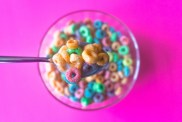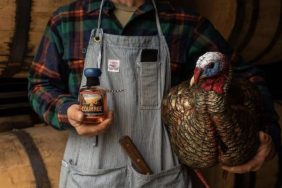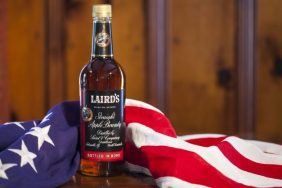There has been a whiskey renaissance in recent years. We’ve seen the rise of Scotch whiskey, Bourbon and even Irish whiskey. A Canadian whiskey (Crown Royal Northern Harvest Rye) was even proclaimed as the best whiskey in the world for 2015 by famed spirits writer Jim Murray. So, that begs the question: what will be the next spirit to rapidly gain in popularity?
Applejack isn’t the obvious answer. Many people have never even tried this brandy distilled from apples. This might be surprising because at one point it was by far the most popular spirit in America.
Simply, applejack is a spirit distilled from apples. “As whiskeys are made from grain, applejack is made from apples,” says co-founder of Barking Irons Distilling & Imports Co, Elliott Phear.
Applejack is a spirit made from concentrating apple cider, either by freeze distillation or the more common evaporative distillation. The name “applejack” comes from the freezing distillation. Jacking is a word that is used to define the freezing involved in the distillation. So, the apple is literally jacked. It sounds inappropriate, but it isn’t.
Also: The Pride of Brazil: Cachaça and the Caipirinha
In the early 1600s, growing apples was one of the most popular forms of farming in the colonies. Much of the apple haul was used for food and some was used for hard cider. But, whiskey drinkers weren’t content with the low-alcohol content in the cider and begged for something different. This was right around the time that applejack was invented. Hard cider producers realized that if they left their bottles outside on a freezing night and then removed the ice from the liquid, the remaining liquid was much higher in alcohol. Although not as harsh as moonshine (a spirit that also has its roots in colonial America), the earliest forms of applejack were known to leave drinkers with titanic-sized hangovers the morning after imbibing.

Applejack is the original American spirit. “Made by George Washington himself, it was one of our country’s most popular spirits throughout the 1800s but fell out of fashion when grain spirits took over combined with bad press from the dodgy and inconsistent freeze distillation methods,” says Phear.
The NY Times reported in 1894 that, “applejack is a particularly powerful and evil spirit… The victim of applejack is capable of blowing up a whole town with dynamite and of reciting original poetry to every surviving inhabitant.” This basically made it their generation’s bath salts. “Our hope is to bring back applejack using our more modern and refined distilling methods, telling some of old New York’s history along the way,” says Phear.
One of the most famous applejack makers was William Laird. A Scotsman, he emigrated to the United Stated in 1698. He decided to make Monmouth, New Jersey home. Prior to moving to the Americas, Laird was already a distiller. Unsure of what to try his trade at in the New World, Laird noticed that apples were pretty much everywhere he looked. It made perfect sense to Laird to try to make a spirit from the abundant hand fruit.
You also might be surprised to know that the real Johnny Appleseed, John Chapman, not only planted apple trees along the Ohio River Valley, he also taught many people how to distill applejack. He figured, since the North East has a ton of apples, why not make more applejack?
Why Should Whiskey Fans Try Applejack?

Casey McGrath, the other co-founder of Barking Irons Distilling & Imports Company believes that whiskey fans should try applejack because their preconceived assumptions about it are most likely wrong. Without ever coming in contact with the spirit, many people assume that it’s sweet and tastes like apple cider or apple pie moonshine. “Actually applejack is a great alternative to anyone looking for a twist in place of their favorite brown spirit.” McGrath even says that he still drinks his fair share of whiskey, but enjoys changing up a classic Manhattan or old fashioned with applejack instead.
“It’s also great on the rocks. Not to mention Gluten free, if you care about that, I don’t, but it is.”
Applejack for the Spring
Obviously, applejack is known more as a fall drink. But, like bourbon or Scotch, any time of year is perfect for applejack. Ivy Mix, (Last year’s Best American Bartender of the year at Tales of the Cocktail) recently gave the duo her take on the classic mule using their applejack that is perfect for spring and summer. “We’ve also been working with some of our favorite bartenders for takes on sidecars and even a Barking Irons Applejack and Prosecco drink,” says Phear.
Barking Mule
By Ivy Mix
Ingredients:
- 1 Large ripe strawberry
- 2 Parts Barking Irons Applejack
- 1 Part ginger-infused simple syrup
- 1 Part fresh lime juice
- Soda Water
Preparation:
Muddle the strawberry in the cocktail shaker and add the next three ingredients and a handful of ice. Shake it well before straining it into a tall glass filled with ice. Top it off with soda and garnish with a lime and candied ginger.
The Next Whiskey
Part of why Phears believes that applejack could be the next whiskey is because of the way they age theirs. “Our applejack is different from other applejacks and apple brandies on the market because we age our liquid in char 2 oak barrels.” They often hear people comparing Barking Irons to a bourbon or rye when it’s really just 100% apples. “Everything is done locally starting with the apples we source from upstate.” The process begins with a mix of Jonagold, Macoun and Gala apples. “We distill that down to an apple Eau de Vie with our partners at Black Dirt Distillery then age in 10 gallon, char 2 oak barrels in Red Hook, Brooklyn with our friends at Van Brunt Stillhouse. Our small team then hand-labels, hand-numbers and wax-seals each bottle.”
The name Barking Irons comes from the old name for pistols and their friends’ music and apparel line. “We met the Casarellas, the brothers behind the label, when Elliott and I’s company, Phear Creative, made some music video content with them a few years back and were inspired by the Old New York history of the brand when we decided to create our own spirits line,” says McGrath. “It represents the old lower Manhattan taste and values that have evolved over time on the Bowery, picking up notes of Punk along the way and retaining Old New York’s fighting spirit.”







